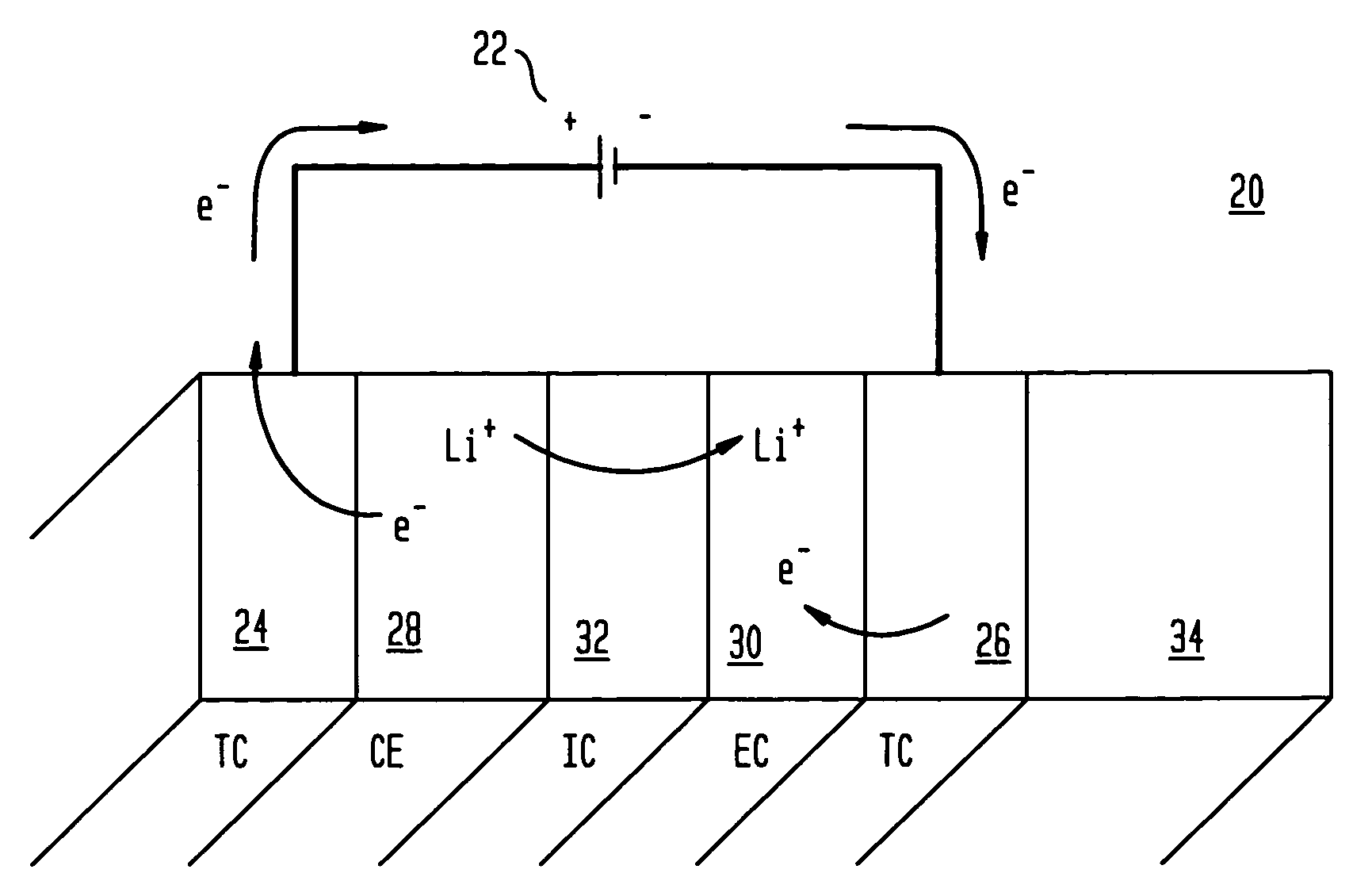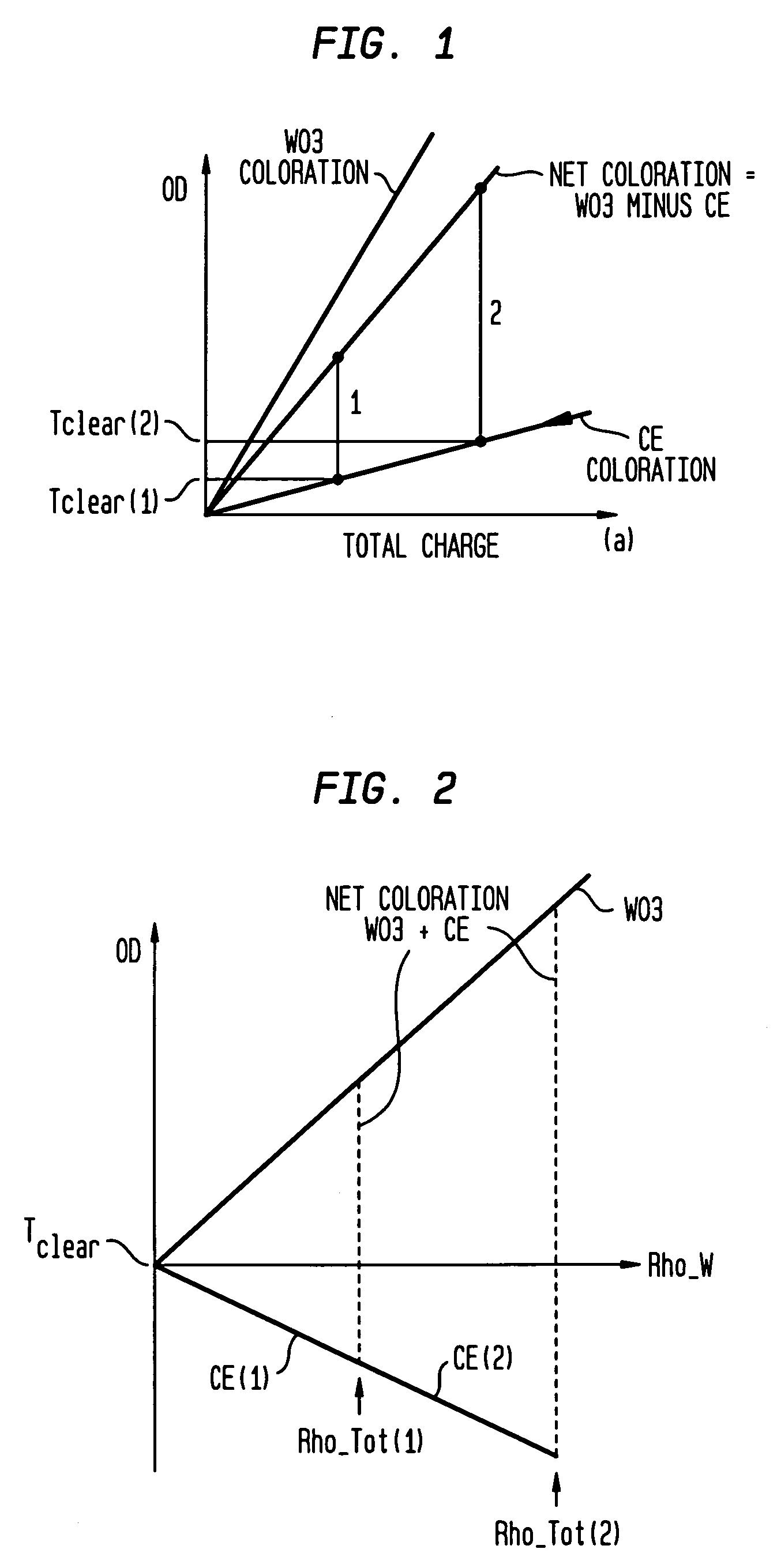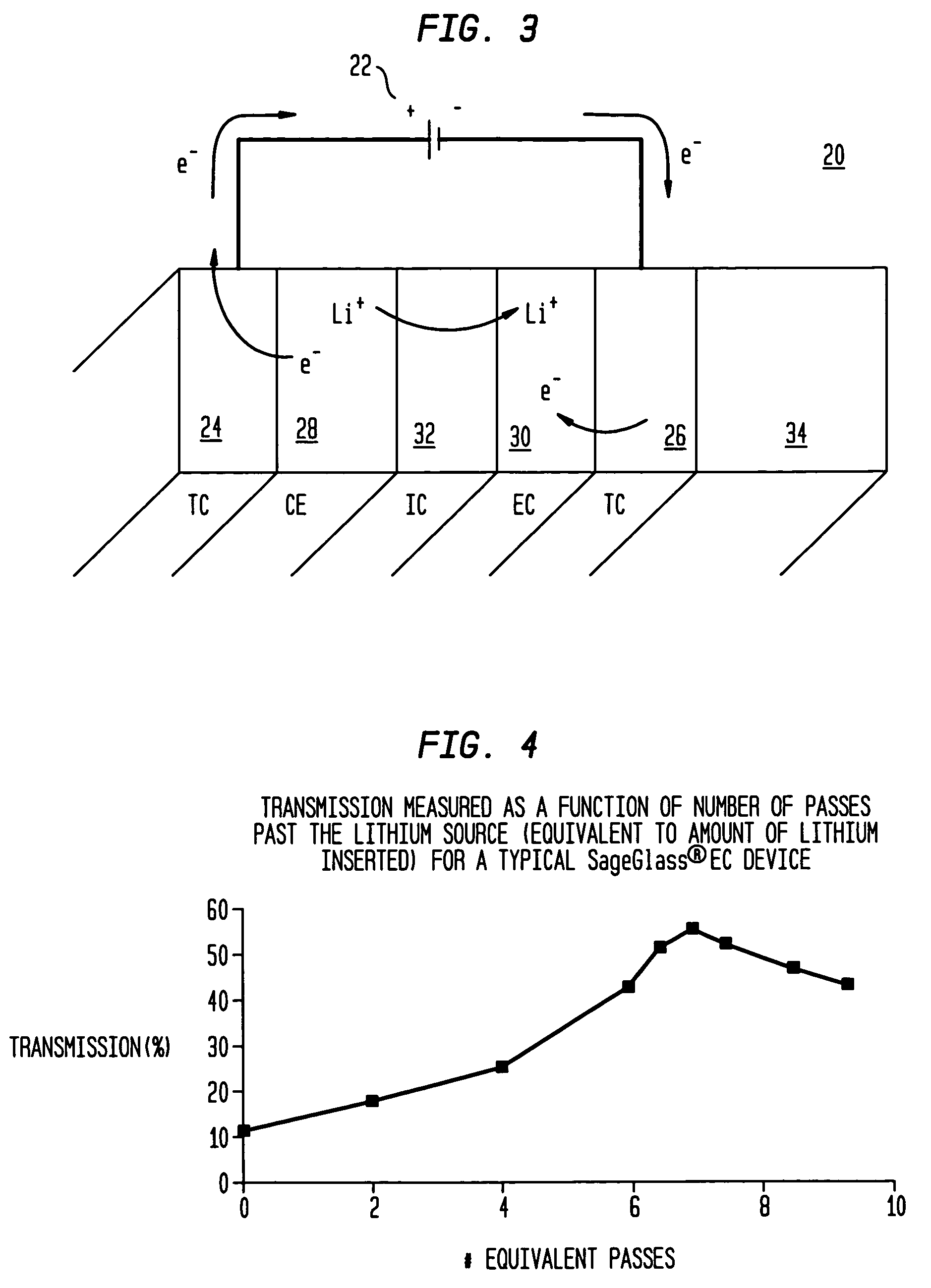Electrochromic devices and methods
a technology of electrochromic devices and electrodes, applied in non-linear optics, instruments, optics, etc., can solve the problems of undesirable side reactions, difficult intercalation of lithium into nio based materials, and how dark an electrochromic device can become, etc., to achieve the effect of improving transmission
- Summary
- Abstract
- Description
- Claims
- Application Information
AI Technical Summary
Benefits of technology
Problems solved by technology
Method used
Image
Examples
Embodiment Construction
[0028]One object of the present invention is to provide an electrochromic device having an anodic complementary counter electrode which provides a high transmission in the fully intercalated state and is capable of long term stability suitable for use as a commercial product.
[0029]This and other objectives are realized by means of an electrochromic device utilizing an anodic complementary counter electrode comprised of a mixed tugsten-nickel oxide which is capable of reversibly intercalating several tens of millicoulombs of charge per square centimeter, in the form of lithium ions and charge compensating electrons, and that upon intercalation of such ions, results in a high transmission in the fully intercalated state.
[0030]Another objective of the present invention is to provide a method of preparing an anodic complementary counter electrode layer for use in connection with an electrochromic device comprising a mixed tungsten-nickel oxide.
[0031]Another objective of the present inve...
PUM
| Property | Measurement | Unit |
|---|---|---|
| thickness | aaaaa | aaaaa |
| thickness | aaaaa | aaaaa |
| temperature | aaaaa | aaaaa |
Abstract
Description
Claims
Application Information
 Login to View More
Login to View More - R&D
- Intellectual Property
- Life Sciences
- Materials
- Tech Scout
- Unparalleled Data Quality
- Higher Quality Content
- 60% Fewer Hallucinations
Browse by: Latest US Patents, China's latest patents, Technical Efficacy Thesaurus, Application Domain, Technology Topic, Popular Technical Reports.
© 2025 PatSnap. All rights reserved.Legal|Privacy policy|Modern Slavery Act Transparency Statement|Sitemap|About US| Contact US: help@patsnap.com



